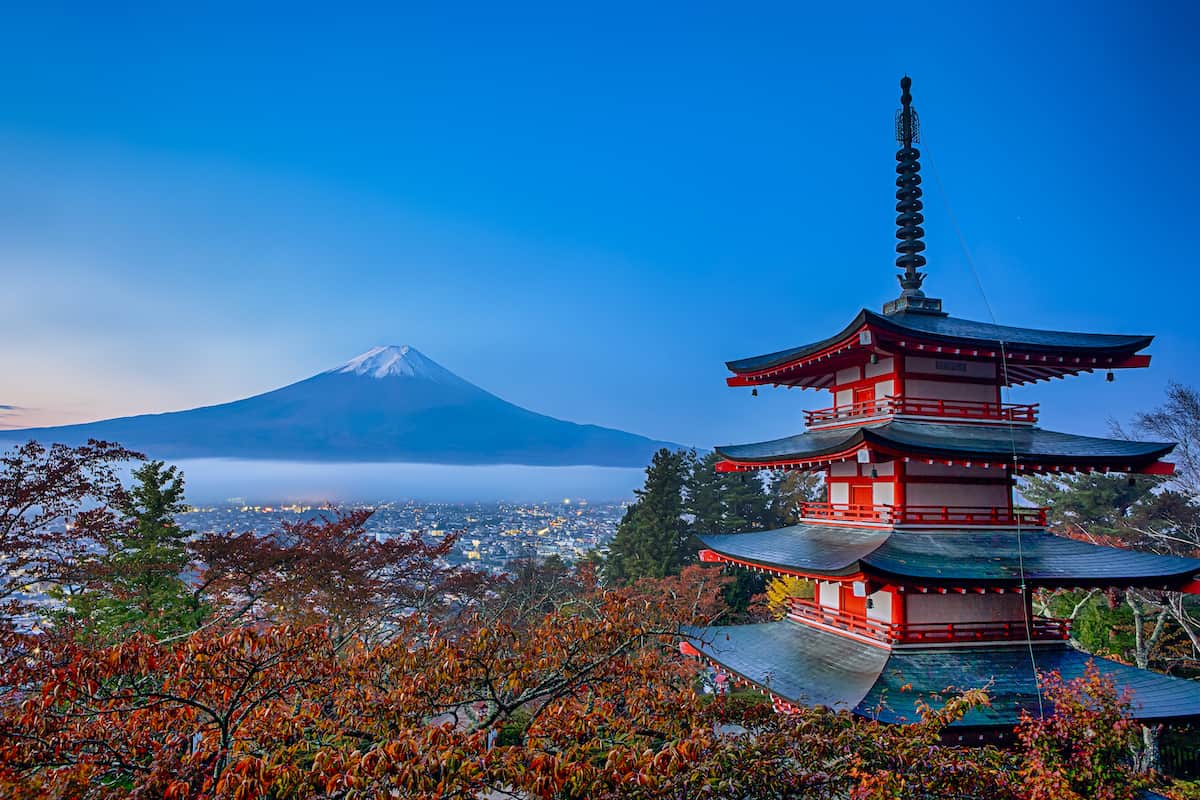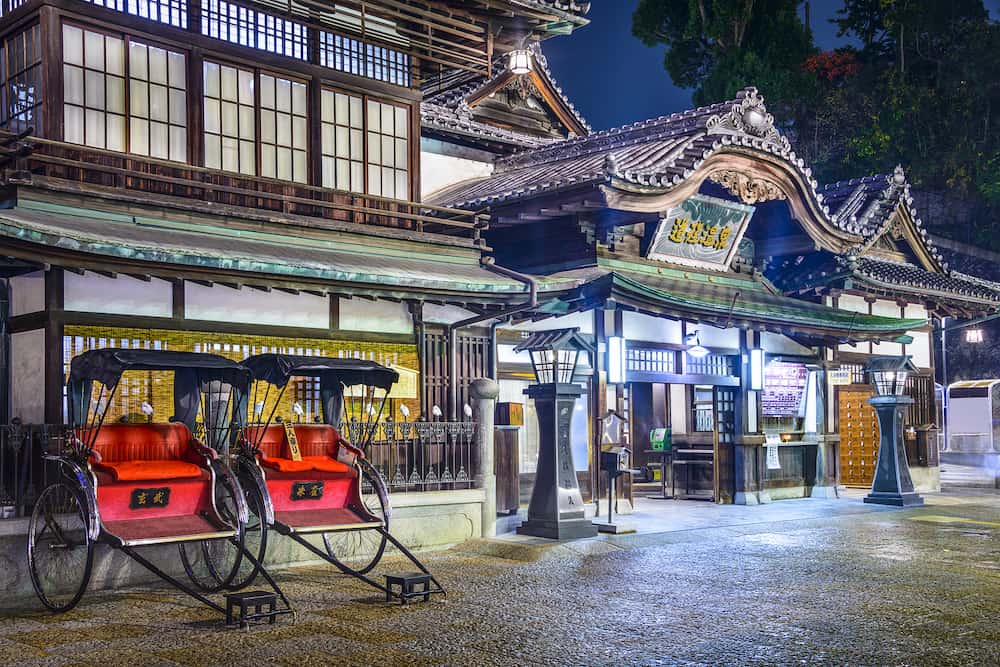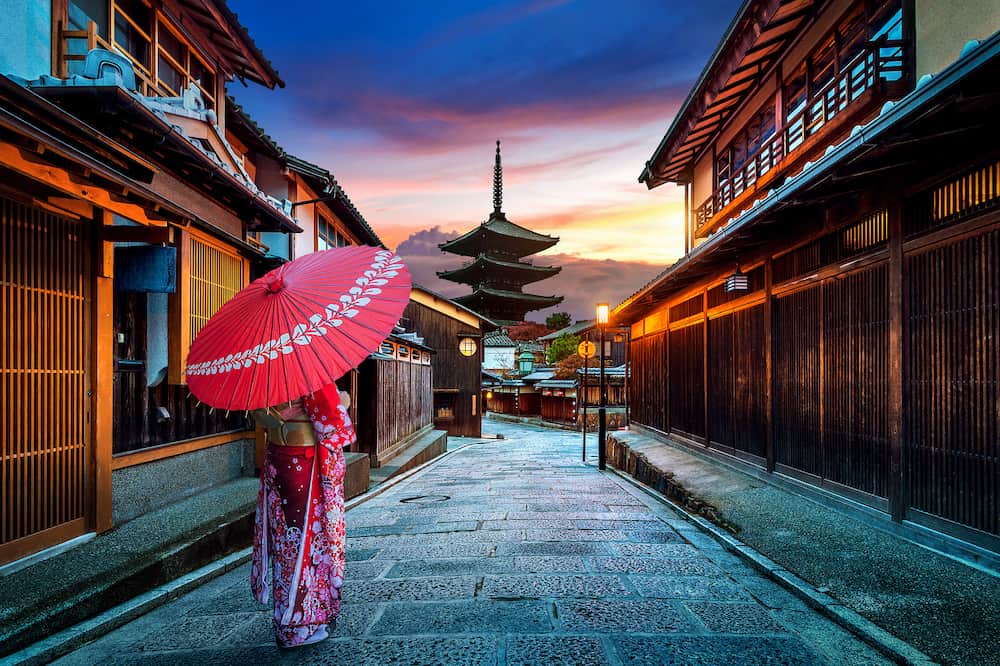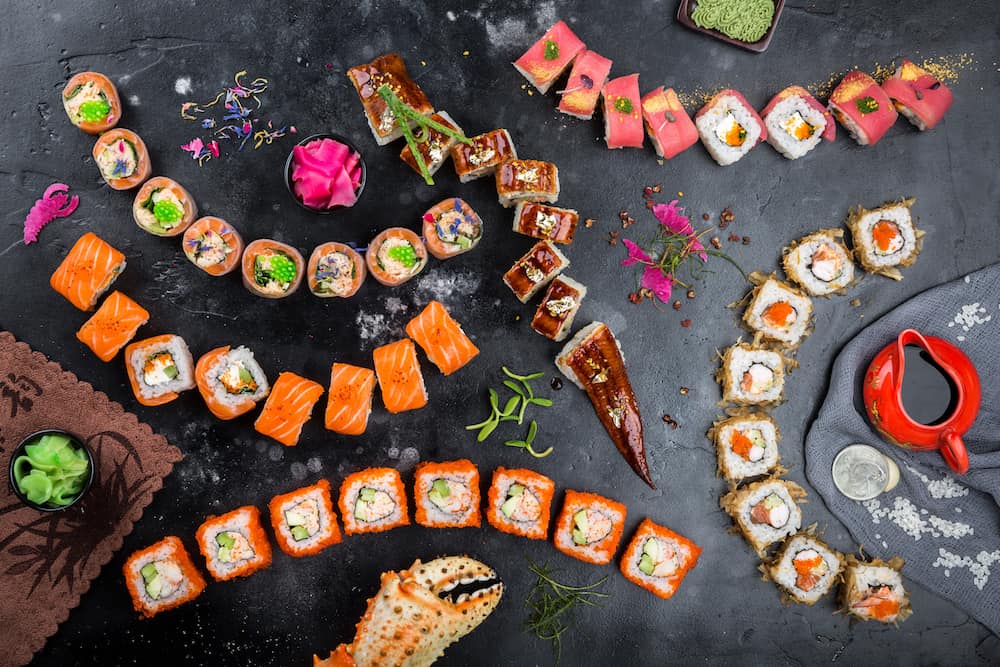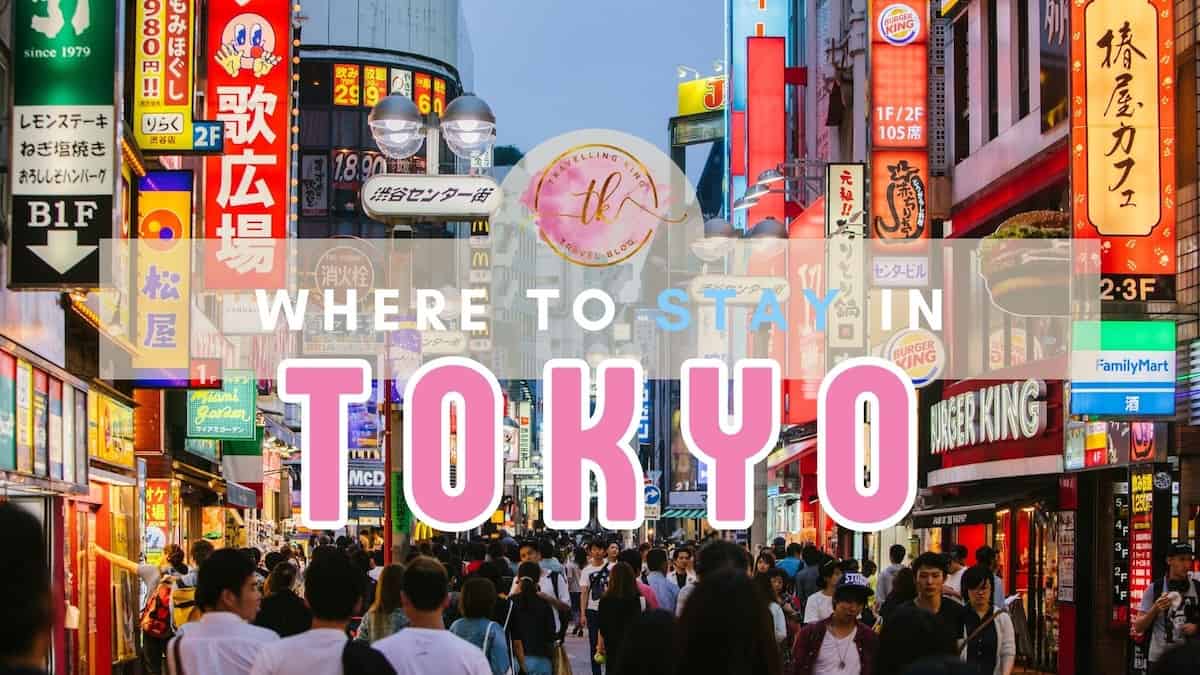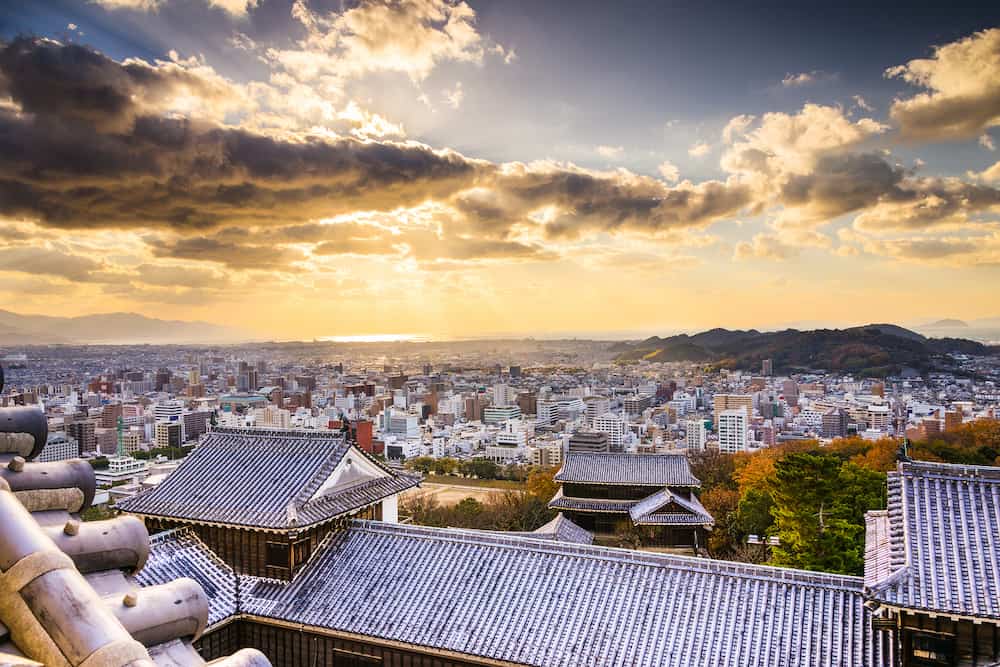An illustrated guide to Kyoto’s best sights
Kyoto is a microcosm of Japanese tradition and history. Forget modern Tokyo‘s skyscrapers, subway cars stuffed with businessmen, and standing sushi bars for now; this is a city that celebrates where Japan came from.
From the lovely wooden architecture and glowing lanterns of Gion, to temples covered in gold leaf, and even in the jaw-dropping colours Kyoto’s natural wonders, this city is the heart of Japanese culture.
Plan your trip
Save on fees abroad with the Wise Card—use it at ATMs, restaurants, and for flights or hotels in over 150 countries. Manage 40+ currencies in real-time with the Wise app.
Need Help Planning?
- Cheap Flights: Find the best deals.
- Accommodation: From hostels to luxury stays.
- Car Rental: Affordable options worldwide.
- Sightseeing Tours: Explore without breaking the bank.
- Travel Adapter: One adapter for all your needs.
- Travel Insurance: Don’t risk it—stay covered.
This post includes affiliate links. Read my full disclosure and content policy.
Gion and surrounding area
Gion
Gion is often the first port of call for visitors to Kyoto. And for good reason – historic Gion is a gorgeous glimpse into an old Japan from another era. Sleepy pedestrian streets of flat stonework link traditional wooden machiya houses and teahouses. Woven straw charms, guardian figurines and gently swaying lanterns adorn doorways, and shrines appear from every corner.
This historic old town is probably best known for its active community of geishas and geisha tradition, which captures the imagination of all who visit.
Geisha schools and lodging are all concentrated here for geiko (‘fully fledged’ geisha, in the kyoto slang; and maiko, the apprentices). Elegant and beautiful in their kimonos and obis, with makeup and hair appropriate to their level of study. The geishas take clients out for drinking, dining, tea ceremonies and entertainment experiences such as singing and dancing.
Don’t get too excited when you start spotting kimonos everywhere, however. The ones sporting selfie sticks are tourists in costume!
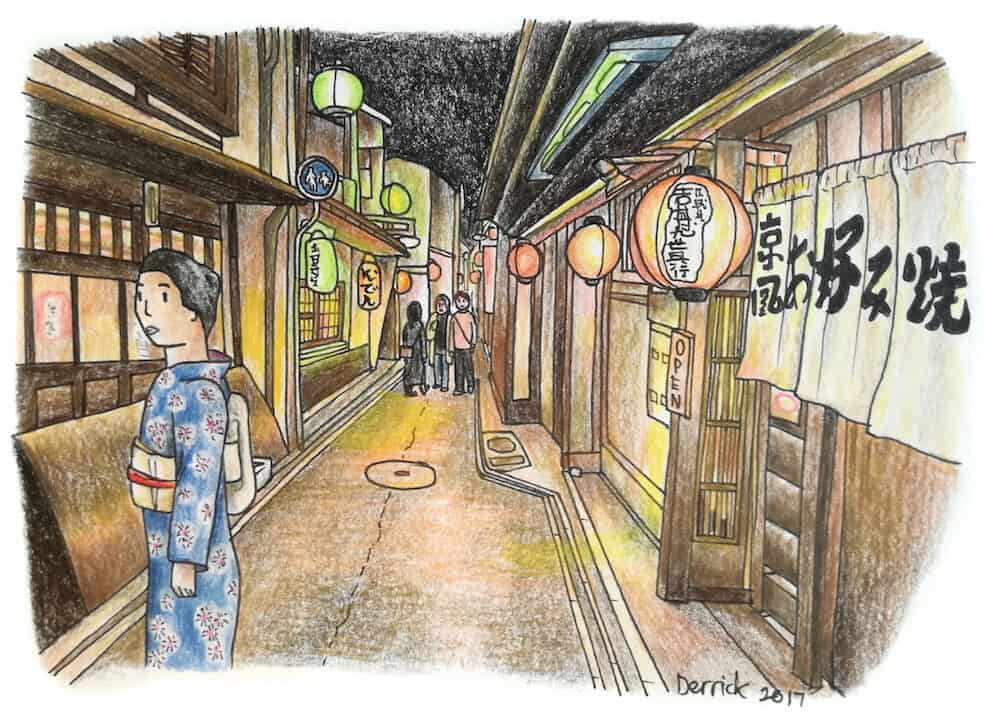
Kiyomizu-dera
At the top of the hill at Gion is the iconic temple complex of Kiyomizu-Dera. A wooden masterpiece with origins dating back to 778, it’s believed to be constructed without a single nail.
The wooden verandah of Kiyomizu-Dera overlooks the sprawl of Kyoto below. During the Edo period, a rumour circulated that jumping from the stage, and surviving the 13 metre fall, would grant the jumper their wish.
If that doesn’t sound like your cup of tea, there’s a more achievable tradition up the hill. The love stone at Jishu Shrine has a counterpart, 18 metres away. It’s said that if you can walk between the two with your eyes closed, you will find true love!
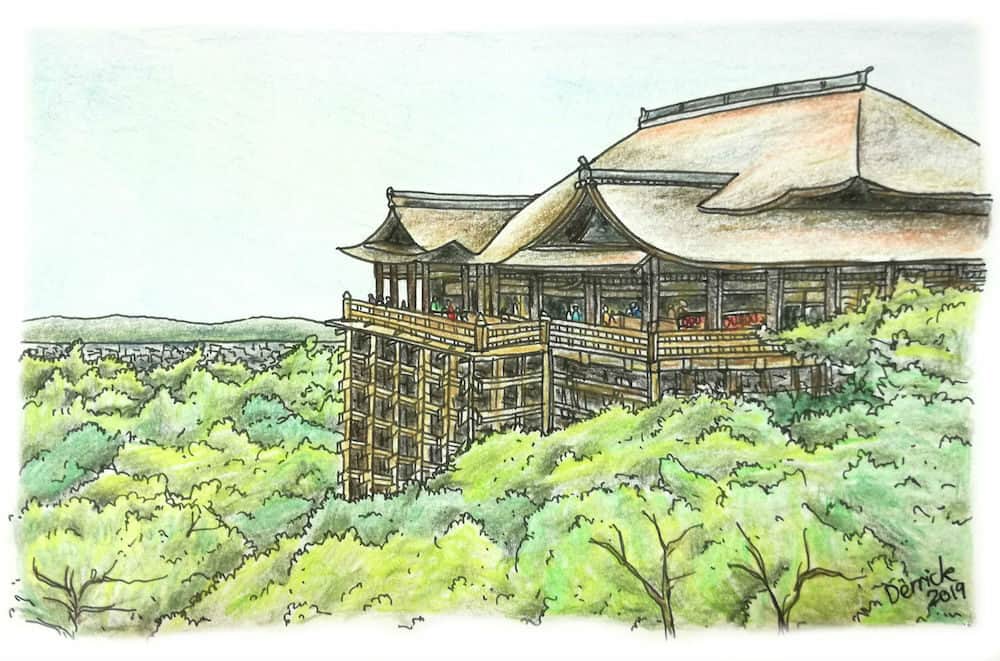
A day trip to Arashiyama
Arashiyama
The bamboo grove at Arashiyama is not a normal forest. The bamboo stalks are massive giants here, soaring far overhead to reach a leafy canopy.
Walking through the grove is a serene and elemental experience, as the bamboo stalks fade into the background in a haze of green tones, and the leaves quietly rustle overhead. The forest can get busy, so try to arrive early.
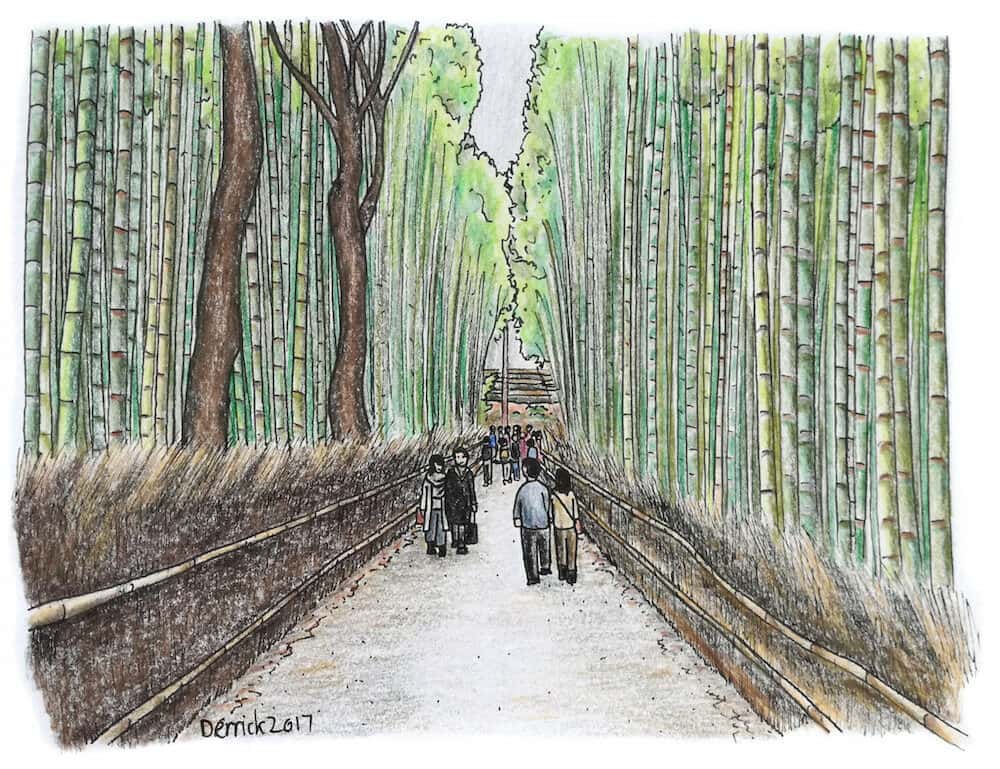
Iwatayama Monkey park
Near Arashiyama is the Iwatayama Monkey Park. It is a short, but tiring climb up the slippery, red-earthed hill trail to reach the monkeys.
A wild group of macaques (Japanese snow monkeys) with red faces and fluffy coats of fur live nearby to the viewing centre. They jump, screech, pick fleas, sunbake and bathe; they also snatch slices of apple from the fingers of visitors behind the feeding cage.

Jojakku-ji
The Arashiyama area is bursting with temples to visit, all within a short walking distance. It is well worth choosing one or more to visit, as many of them are ignore by tourists.
One such example is nearby Jojakku-ji, a small cluster of temples and shrines that follow a leafy garden path up stone steps and mossy gardens. At the top, views of Kyoto beyond are worth the hike.
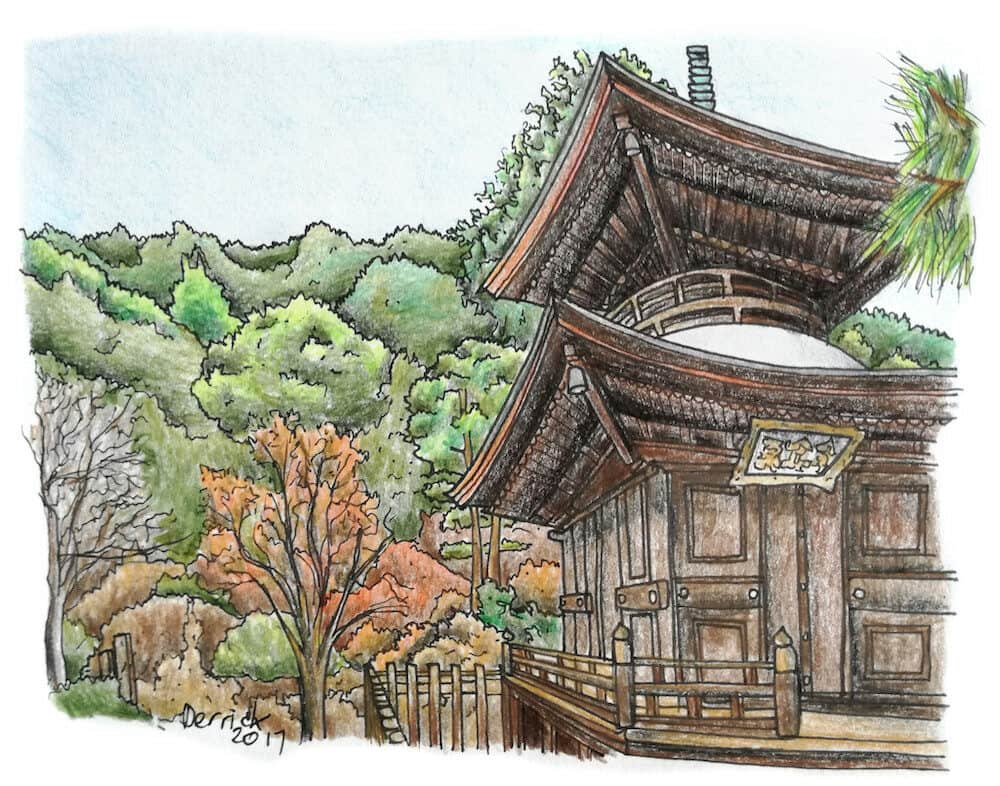
Southern Kyoto
Fushimi Inari
Arguably Kyoto’s most striking sight (and maybe even in the whole country!), Fushimi Inari is a series of stone paths that leads to the summit of Mount Inari. Along the way, thousands of two-legged vermillion torii gates straddle the paths, forming tunnels of beautiful colour.
To visit, take the train to Inari, and follow the signs to Fushimi Inari (there should be a lot of other people going there, too). Walk up the market stalls to the entrance. The crowds at the entrance are easily escaped.
Once the hike gets higher, it’s very easy to find yourself alone, somewhere on the mountain, with a stunning corridor of torii gates stretching out ahead. Turn a corner at the exact right time, and sunlight slices through the torii gates, illuminating bright yellow stripes on the stone below.
Along the way, small teahouses are a great place to rest and enjoy the view, or pick up a figurine of the fox, the messenger of Inari.
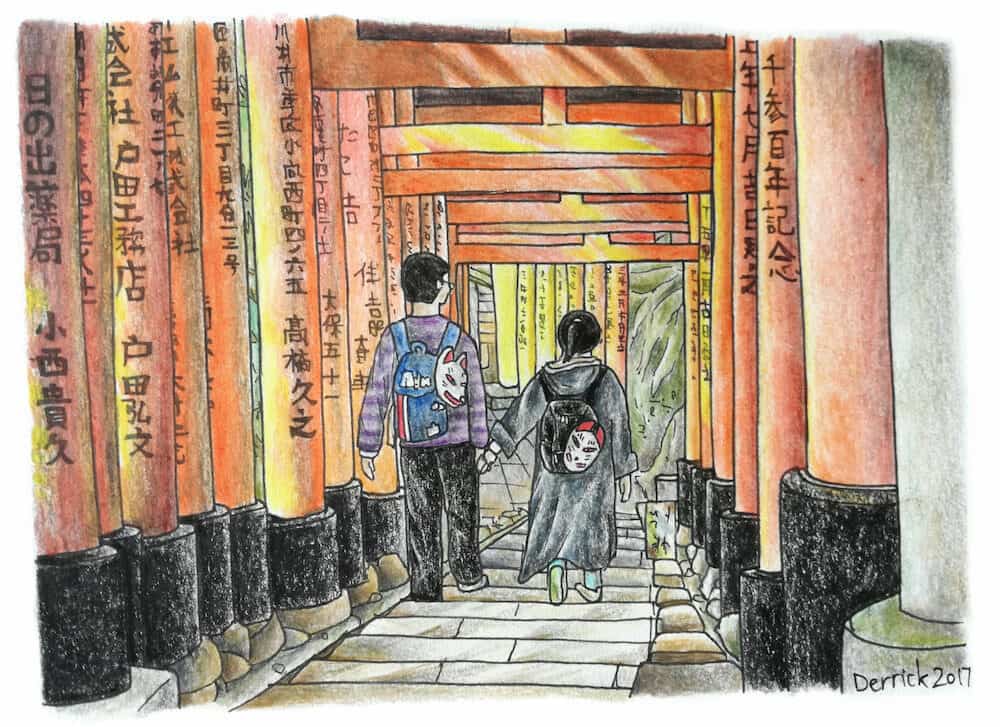
Across the river
Ponto-cho alley and Kiyamachi Dori
These two long streets are neighbours, running parallel to each other. Ponto-cho is a narrow alleyway, illuminated by red and white lanterns that advertise the many restaurants along the way, from cheap izakaya and ramen stores to exclusive tatami mat kaiseki dining that overlooks the river. A tip: red lanterns usually denote cheap restaurants.
Kiyamachi dori follows the course of a shallow canal with a bed of multi-coloured pebbles, and lines of cherry blossoms. Like ponto-cho, this pretty street is filled with nightlife options.
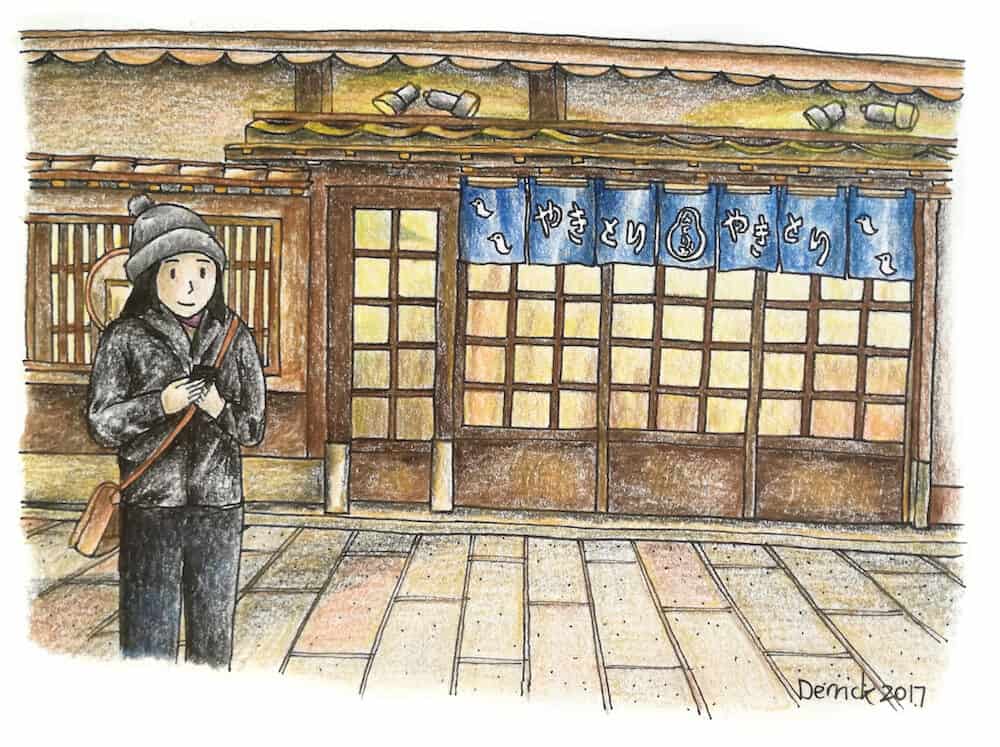
Kyoto nishiki market
Come to Kyoto’s Nishiki market with an empty stomach! The narrow alleyway market stretches out over five city blocks, and is a riot of colours and smells.
Nishiki market is primarily about food; find fresh fish and seafood on display, frying takoyaki (octopus balls), white strawberries, baskets of pickled and chillied vegetables, mochis and sweets, dry ingredients and sushi.
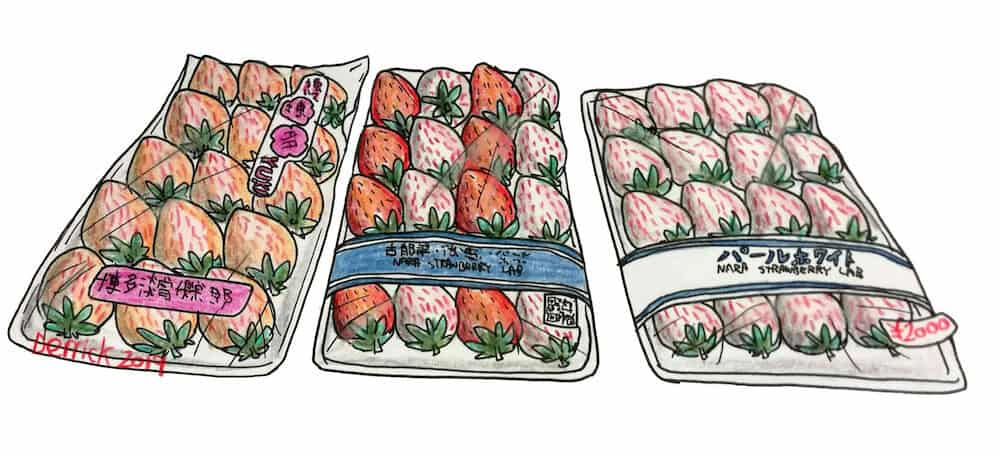
Northern Kyoto
Nijō castle
Nijō castle and fortifications are a place to let your imagination run wild. The Tokugawa shoguns ruled from this castle before the capital moved to Tokyo. Sadly, the tenshu, or main keep, was destroyed by fire in 1750.
Regardless, the massive walls are still very much on display. Within the double-concentric moats are plenty of other buildings to explore.
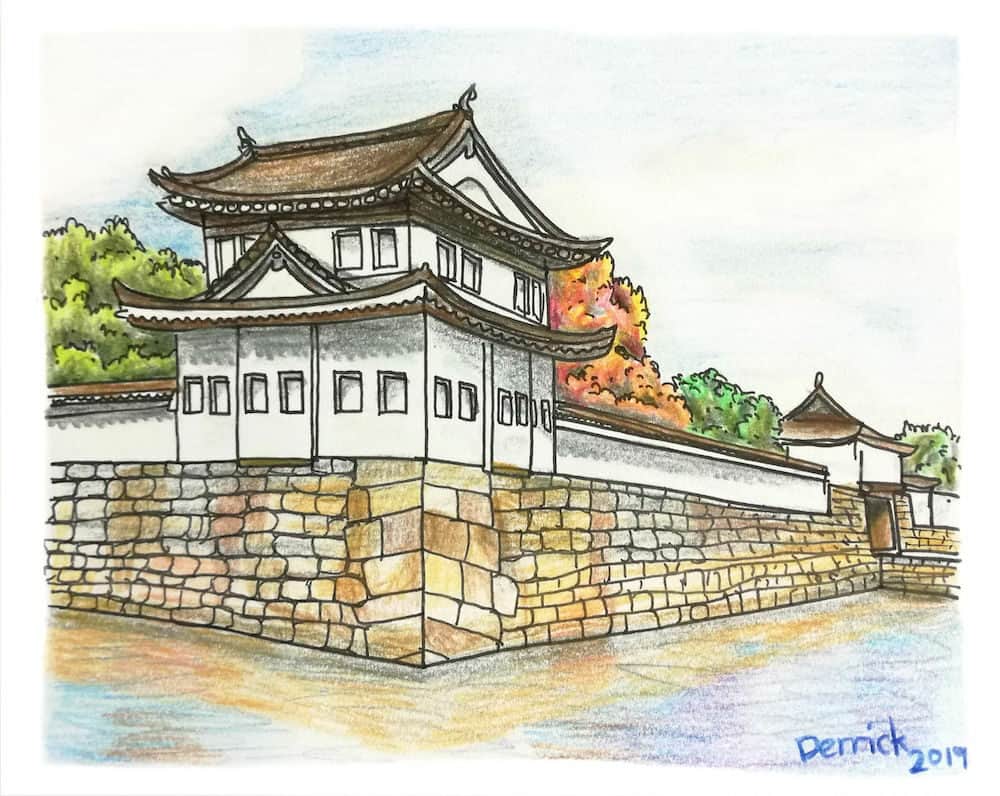
Kinkaku-ji and Ginkaku-ji
Kyoto’s most famous temple might be Kinkaku-ji, the golden temple. Small and squat, with the top 2 floors clad in gold leaf, perched beside a still lake that copies its golden reflection in its waters.
The visit is generally a quick one so take some time to find Ginkaku-ji, the silver temple. Despite its name, it isn’t actually silver; shogun Ashikaga Yoshimitsu’s dream of covering the temple in silver was never realised after his death.
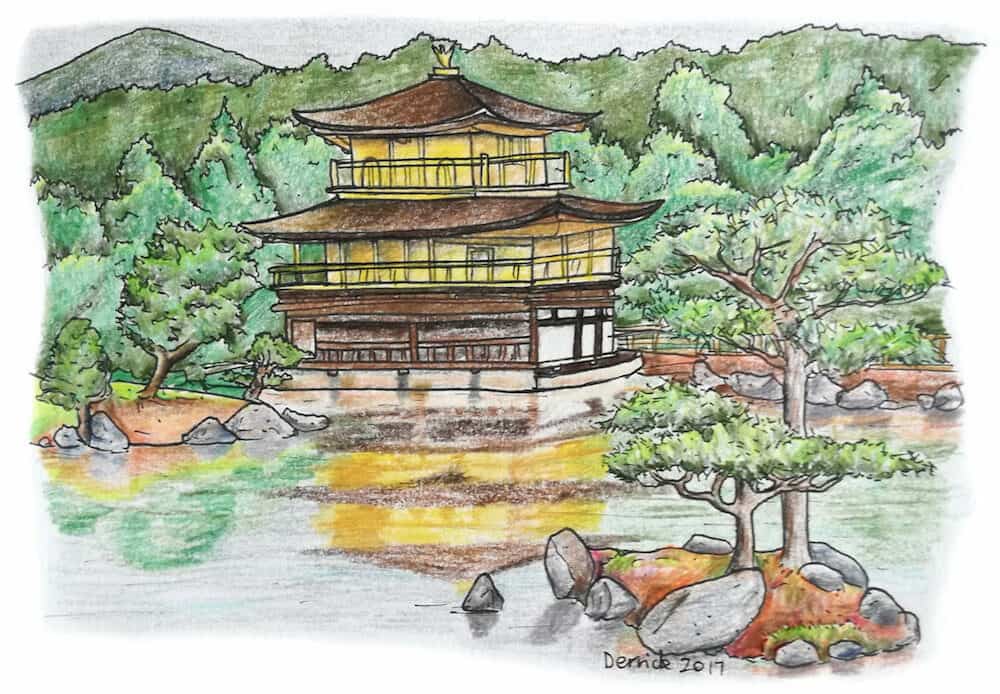
Exploring Kyoto
No matter how many times you visit, you’ll always find a new temple around the corner that eluded you last time. You might discover that different areas have different symbols on their lanterns, or that small piles of salt on a doorstep are a traditional way of attracting customers to a shop. Kyoto is endlessly explorable, and absolutely a place that will have you coming back again and again.
About the Author
Derrick is a 32-year old living in Melbourne, Australia. With plenty of family in Europe, and an insatiable travel bug that won’t go away, there’s always a good reason to travel somewhere new! When he’s not travelling, he’s illustrating past adventures in his sketchbook, and experiencing all the challenges of being a new dad. Derrick runs the travel blog Sticky Mango Rice – Inspiration for travel.




